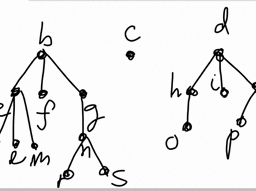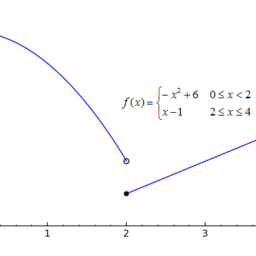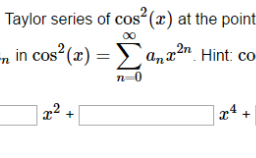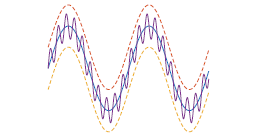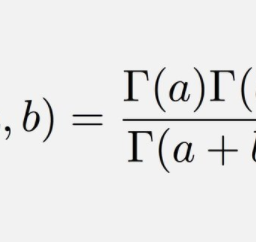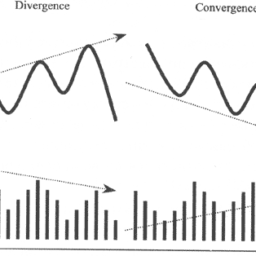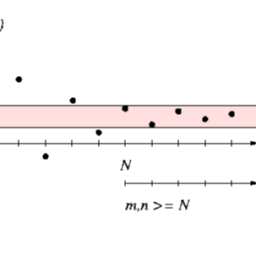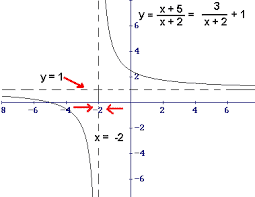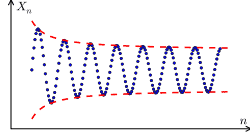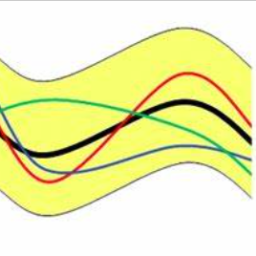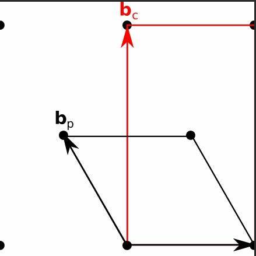$6.11$ Ascoli Arzela Theorem $^{*}$
This is a major result which plays the role of the Heine Borel theorem for the set of continuous functions. I will give the version which holds on an interval, although this theorem holds in much more general settings. First is a definition of what it means for a collection of functions to be equicontinuous. In words, this happens when they are all uniformly continuous simultaneously.
Definition $6.11 .1$ Let $S \subseteq C([0, T])$ where $C([0, T])$ denotes the set of functions which are continuous on the interval $[0, T]$. Thus $S$ is a set of functions. Then $S$ is said to be equicontinuous if whenever $\varepsilon>0$ there exists a $\delta>0$ such that whenever $f \in S$ and $|x-y|<\delta$, it follows
$$
|f(x)-f(y)|<\varepsilon
$$
The set of functions is said to be uniformly bounded if there is a positive number $M$ such that for all $f \in S$,
$$
\sup {|f(x)|: x \in[0, T]} \leq M
$$
Then the Ascoli Arzela theorem says the following in which it is assumed the functions have values in $\mathbb{F}$ although this could be generalized.
Theorem $6.11 .2$ Let $\left{f_{n}\right}_{n=1}^{\infty} \subseteq C([0, T])$ be uniformly bounded and equicontinuous. Then there exists a uniformly Cauchy subsequence.
Proof: Let $\varepsilon>0$ be given and let $\delta$ correspond to $\varepsilon / 4$ in the definition of equicontinuity. Let $0=x_{0}{k(1) \rightarrow \infty} f{k(1)}\left(x_{0}\right)$ and $\lim {k(1) \rightarrow \infty} f{k(1)}\left(x_{1}\right)$ both exist. Then take a subsequence of $\left{f_{k(1)}\right}$ called $k(2)$ such that for $x_{i}=x_{0}, x_{1}, x_{2}, \lim {k(2) \rightarrow \infty} f{k(2)}\left(x_{i}\right)$ exists. This can be done because if a sequence converges then every subsequence converges also. Continue this way. Denote by ${k}$ the last of these subsequences. Thus for each $x_{i}$ of these equally spaced points of the interval, $\lim {k \rightarrow \infty} f{k}\left(x_{i}\right)$ converges. Thus there exists $m$ such that if $k, l \geq m$, then for each of these $x_{i}, i=1, \ldots, n$, $$ \left|f_{k}\left(x_{i}\right)-f_{l}\left(x_{i}\right)\right|<\frac{\varepsilon}{4} $$ Let $x \in[0, T]$ be arbitrary. Then there is $x_{i}$ such that $x_{i} \leq x0$ there exists a subsequence $\left{f_{k}\right}$ with the property that
$$
\sup {x \in[0, T]}\left|f{k}(x)-f_{l}(x)\right|<\varepsilon $$ provided $k, l$ are large enough. The argument also applies with no change to a given subsequence in place of the original sequence of functions. That is, for any subsequence of the original one, there is a further subsequence which satisfies the above condition. In what follows $\left{f_{i k}\right}_{k=1}^{\infty}$ will denote a subsequence of $\left{f_{(i-1) k}\right}_{k=1}^{\infty}$. Let $\varepsilon_{i}=1 / 2^{i}$ so that $\lim {i \rightarrow \infty} \varepsilon{i}=0$. Then let $\left{f_{i k}\right}_{k=1}^{\infty}$ denote a subsequence which corresponds to $\varepsilon_{i}$ in the above construction. Consider the following diagram. $$ \begin{gathered} f_{11}, f_{12}, f_{13}, f_{14}, \cdots \ f_{21}, f_{22}, f_{23}, f_{24}, \cdots \ f_{31}, f_{32}, f_{33}, f_{34}, \cdots \ \vdots \end{gathered} $$ The Cantor diagonal sequence is $f_{k}=f_{k k}$ in the above. That is, it is the sequence $$ f_{11}, f_{22}, f_{33}, f_{44}, \cdots $$ Then from the construction, $f_{j}, f_{j+1}, f_{j+2}, \cdots$ is a subsequence of $\left{f_{j k}\right}_{k=1}^{\infty}$. Therefore, there exists $m$ such that $k, l>m$,
$$
\sup {x \in[0, T]}\left|f{k}(x)-f_{l}(x)\right|<\varepsilon_{j}
$$
However, these $\varepsilon_{j}$ converge to 0 and this shows that the diagonal sequence $\left{f_{j}\right}_{j=1}^{\infty}$ just described is a uniformly Cauchy sequence.
The process of obtaining this subsequence is called the Cantor diagonal process and occurs in other situations.
From this follows an easy corollary.
Corollary 6.11.3 Let $\left{f_{n}\right}_{n=1}^{\infty} \subseteq C([0, T])$ be uniformly bounded and equicontinuous. Then there exists a subsequence which converges uniformly to a continuous function $f$ defined on $[0, T]$.
Proof: From Theorem $6.9 .11$ the uniformly Cauchy subsequence from the Ascoli Arzela theorem above converges uniformly to a function $f$. Now by Theorem $6.9 .7$. this function $f$ is also continuous because, by this theorem, uniform convergence takes continuity with it and imparts it to the limit function.
This theorem and corollary are major results in the theory of differential equations. There are also infinite dimensional generalizations which have had great usefulness in the theory of nonlinear partial differential equations.

$6.11$ 阿斯科利阿泽拉定理 $^{*}$
这是对连续函数集发挥海涅博雷尔定理作用的一个主要结果。我将给出一个区间成立的版本,尽管这个定理适用于更一般的设置。首先是对函数集合是等连续的含义的定义。换句话说,当它们同时一致地连续时,就会发生这种情况。
定义 $6.11 .1$ 令 $S \subseteq C([0, T])$ 其中 $C([0, T])$ 表示在区间 $[0, T]$ 上连续的函数集。因此$S$ 是一组函数。则称 $S$ 是等连续的,如果每当 $\varepsilon>0$ 存在一个 $\delta>0$ 使得只要 $f \in S$ 和 $|x-y|<\delta$,它遵循
$$
|f(x)-f(y)|<\varepsilon
$$
如果存在一个正数 $M$ 使得对于所有 $f \in S$,则称该函数集是一致有界的,
$$
\sup {|f(x)|: x \in[0, T]} \leq M
$$
然后 Ascoli Arzela 定理说以下假设函数具有 $\mathbb{F}$ 中的值,尽管这可以推广。
定理 $6.11 .2$ 令 $\left{f_{n}\right}_{n=1}^{\infty} \subseteq C([0, T])$ 是一致有界和等连续的。则存在一个一致的柯西子序列。
证明:设$\varepsilon>0$,并令$\delta$ 对应于等连续性定义中的$\varepsilon / 4$。令 $0=x_{0}{k(1) \rightarrow \infty} f{k(1)}\left(x_{ 0}\right)$ 和 $\lim {k(1) \rightarrow \infty} f{k(1)}\left(x_{1}\right)$ 都存在。然后取 $\left{f_{k(1)}\right}$ 的子序列 $k(2)$ 使得对于 $x_{i}=x_{0}, x_{1}, x_{ 2}, \lim {k(2) \rightarrow \infty} f{k(2)}\left(x_{i}\right)$ 存在。这是可以做到的,因为如果一个序列收敛,那么每个子序列也会收敛。继续这样。用 ${k}$ 表示这些子序列中的最后一个。因此对于区间的这些等距点中的每个 $x_{i}$,$\lim {k \rightarrow \infty} f{k}\left(x_{i}\right)$ 收敛。因此存在 $m$ 使得如果 $k, l \geq m$, 那么对于每一个 $x_{i}, i=1, \ldots, n$, $$ \left|f_{k}\left(x_{i}\right)-f_{l}\left(x_{i}\right)\right|<\frac{\varepsilon}{4} $$ 让 $x \in[0, T]$ 是任意的。然后有 $x_{i}$ 使得 $x_{i} \leq x0$ 都存在一个子序列 $\left{f_{k}\right}$,其属性为
$$
\sup {x \in[0, T]}\left|f{k}(x)-f_{l}(x)\right|<\varepsilon $$ 如果 $k, l$ 足够大。该论点也适用于给定的子序列,而不是原始的函数序列。也就是说,对于任何子序列 在原始序列中,还有一个满足上述条件的子序列。下面的 $\left{f_{ik}\right}_{k=1}^{\infty}$ 将表示 $\left{f_{(i-1) k}\right\ 的子序列}{k=1}^{\infty}$。令 $\varepsilon{i}=1 / 2^{i}$ 使得 $\lim {i \rightarrow \infty} \varepsilon{i}=0$。然后令 $\left{f_{ik}\right}_{k=1}^{\infty}$ 表示对应于上述构造中的 $\varepsilon_{i}$ 的子序列。考虑下图。 $$ \开始{聚集} f_{11}, f_{12}, f_{13}, f_{14}, \cdots \ f_{21}, f_{22}, f_{23}, f_{24}, \cdots \ f_{31}, f_{32}, f_{33}, f_{34}, \cdots \ \vdots \结束{聚集} $$ 康托尔对角序列在上面是$f_{k}=f_{k k}$。也就是说,它是序列 $$ f_{11}, f_{22}, f_{33}, f_{44}, \cdots $$ 那么从构造上看,$f_{j}, f_{j+1}, f_{j+2}, \cdots$ 是 $\left{f_{jk}\right}_{k=1 的子序列}^{\infty}$。因此,存在 $m$ 使得 $k, l>m$,
$$
\sup {x \in[0, T]}\left|f{k}(x)-f_{l}(x)\right|<\varepsilon_{j}
$$
然而,这些 $\varepsilon_{j}$ 收敛到 0,这表明刚刚描述的对角序列 $\left{f_{j}\right}_{j=1}^{\infty}$ 是一致的柯西序列。
获得这个子序列的过程称为

微积分note Integer Multiples of Irrational Numbers 请认准UprivateTA™. UprivateTA™为您的留学生涯保驾护航。


